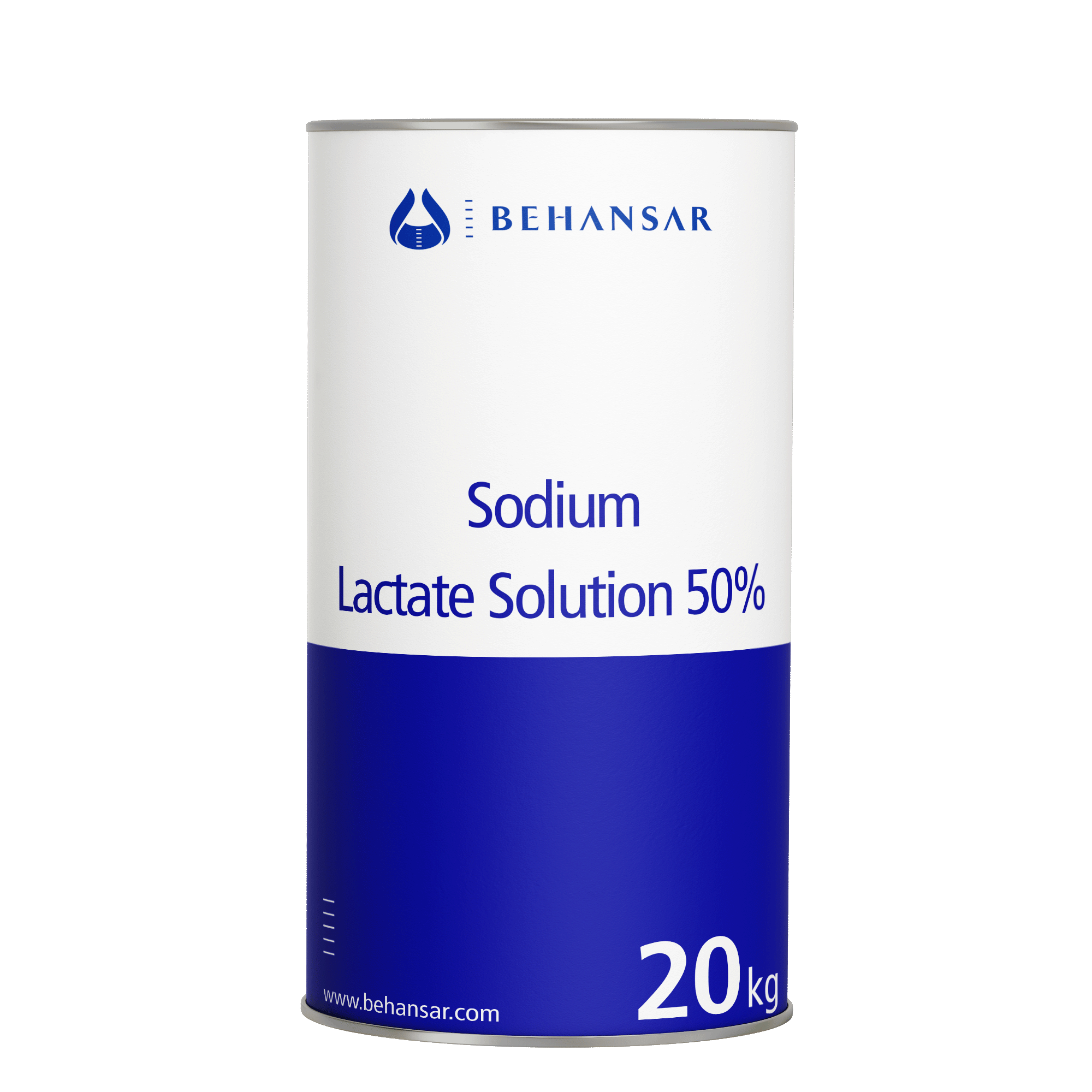Sodium Lactate Solution 50%
| Chemical Formula: | C₃H₅NaO₃ |
| Molecular weight | 112.06 |
| .CAS No: | 72-17-3 |
| Applications: |

About Sodium Lactate Solution 50%
Sodium lactate is an organic salt consist of essential ion sodium and lactate as the counterion. This compound possesses interesting properties that pave the ground for its vast application in deferent fields.
From medicinal point of view, lactate moiety of this salt may serve as a fuel to the brain, specially in hypoglycemic condition occurs in some neurometabolic disorders. In CNS, there is a cell to cell lactate shuttle system in which astrocytes take up glucose and convert that to lactate via glycolysis pathway then lactate is transported to neurons, where it serves as a source of energy. Sodium lactate has been infused to patients with diabetes mellitus, traumatic brain injury (TBI), and Alzheimer’s disease for many years.
Scientists believed that significant decrease in brain lactate concentration during hypoglycemia represents lactate utilization as an alternative energy source in diabetes patients. Researches showed that sodium lactate administration not only reduces the awareness of hypoglycemia but also prevents clinical symptoms of neuroglycopenia.
In patients with TBI, glucose entrance to cerebrum reduces remarkably while cerebral uptake of lactate does not differ from healthy persons. Clinical reports indicate that sodium lactate infusion offers better long-term remedy compared to standard care in TBI patients.
Alzheimer’s disease generally causes disruption in cerebral microcirculation and glucose metabolism; However, lactate could correct blood flow in cerebrum through its vasodilatation effect and be a good substitute for glucose as an energy source.
Sodium lactate is also administered in patients during cardiac surgery because their stressed myocardium is not able to consume glucose and free fatty acid to provide its energy so it shifts to lactate pathway as an energy producer system; Sodium lactate effectively enhances cardiac output in these patients even with the lesser amount compared to other infusions. Consequently, it prevents ventricular fibrillation despite of conditions like arrhythmia and bradycardia during surgery.
Another clinical event requires treatment with sodium lactate is called metabolic acidosis (bicarbonate deficiency). Since normal metabolic conversion of lactate to bicarbonate is disrupted in this situation because of insufficient lactate content, oral or intravenous administration of sodium lactate could compensate for inadequate lactate in the system lead to neutralization of acidosis. The sodium (Na+) ion combines with bicarbonate ion retains bicarbonate to combat metabolic acidosis.
In food industry, sodium lactate is used as a flavoring agent, antimicrobial agent, pH regulator, emulsifier, and washing or surface removal agent for foods under the number E325. It is also used as an antioxidant synergist, bodying agent, and humectant for foods as well as a plasticizer for casein.
In textile industry, it is a good substitute for glycerol in calico printing.
In cosmetics and personal care, sodium lactate is an ingredient of several products include hair styling shampoos, eye liners, lip balms, hand/body lotions, facial cleansing and moisturizing products (face mask), shower gels, softeners and conditioners because of its special properties such as exfoliant, cleaning agent, buffering / humectant, keratolytic, moisturizing, pH Adjuster and surfactant.
| Product Number | Product Name | Form | Pharmacopoeia | Solvency | Storage conditions | Color | Purity | Additional information |
|---|---|---|---|---|---|---|---|---|
| 151100003 | Sodium Lactate Solution 50% | Liquid | USP | Preserve in tight containers. | Clear, colorless or practically colorless viscous liquid | 49.0%-51.0% | Slightly viscous liquid, odorless or having a slight, not unpleasant odor |

